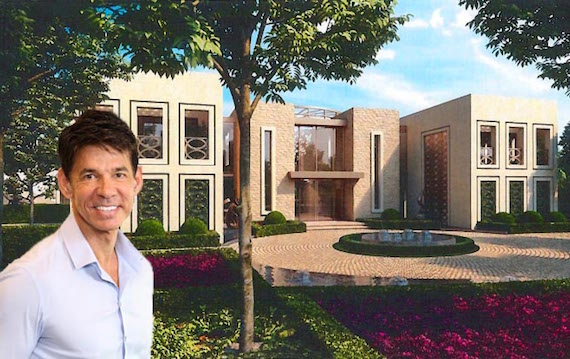Trending
 What’s going on with Ryan Serhant’s Central Park Tower penthouse listing?
What’s going on with Ryan Serhant’s Central Park Tower penthouse listing? Another woman alleges Oren Alexander raped her in New York
Another woman alleges Oren Alexander raped her in New York Spec mansion above Malibu’s Billionaire’s Beach goes for $32M
Spec mansion above Malibu’s Billionaire’s Beach goes for $32M Investors scoop up dev site near Pompano Beach casino for $29M, amid near record South Florida multifamily pipeline
Investors scoop up dev site near Pompano Beach casino for $29M, amid near record South Florida multifamily pipelineRichard Landry-designed manse that DRC called a “mausoleum” will replace Kirk Kerkorian’s estate

UPDATED: Feb. 7 07.30 a.m.: The Beverly Hills Planning Commission unanimously approved timeshare millionaire Stephen Cloobeck’s plans to build a $20 million, 16,000-square-foot mansion on North Roxbury Drive on January 26th, despite the Design Review Commission’s denial of the project.
Cloobeck is the first Beverly Hills resident to successfully appeal a DRC ruling, one of the commission’s members said at a hearing. His request for a construction permit for the lot — the site of the former estate of late billionaire Kirk Kerkorian — was previously denied by the DRC, because among other perceived flaws, the proposed project looked “like a mausoleum.”
Lawyer Tom Levyn, a former mayor of Beverly Hills, represented Cloobeck at the appeals hearing. The ruling could pave the way for other architects and homeowners to challenge the decisions of the DRC.
The DRC was established in 2004 in order to prevent the overbuilding, also known as the “mansionization,” of Beverly Hills. Any new homes planned for construction are subject to review by the commission, which can request changes to a project’s scale and design.
Cloobeck bought the property in December 2015 for $19 million, and immediately demolished Kerkorian’s erstwhile Mediterranean-style villa. He then commissioned Landry to design a mansion on the site. At a DRC hearing in October 2016, the commission said Landry’s plan was “too bulky,” lacked “warmth,” and required an extensive redesign of numerous features, including the facade and the home’s general layout.
When Landry returned amended plans to the DRC in December 2016, the commission found the changes unsatisfactory. The style of the proposed home hearkened to the 1960s commercial or public designs of Louis Kahn, said DRC chairperson Ilene Nathan.
“It’s hardly appropriate for a single family home,” Nathan said, adding that some in the commission ”thought it looked like a mausoleum.”
At the appeals hearing, Landry countered this assessment.
“Have you seen a mausoleum? You should Google it — that’s not what it looks like,” Landry said. “I believe this is a great piece of architecture that is misunderstood.”
Unwilling to further amend the plans for the home, Landry and Levyn requested the DRC deny their construction permit, allowing the project to seek an appeal approval through the Beverly Hills Planning Commission. The DRC unanimously voted to deny the plans.
“The applicant requested a denial so they could come before you,” Nathan explained at the hearing. “Because they didn’t want to come back with another design.”
Self-styled “most affected neighbor” Larry Larson spoke in support of the Cloobeck’s home.
“If I had got hung up in Design Review, I would have put the property on the market and said ‘forget Beverly Hills,’” he said, claiming the DRC was having a negative impact on property values. “I look forward to you passing this — grant the appeal, and let this go forward.”
Planning Commissioner Howard Fisher said many of L.A.’s great architectural landmarks would have never been built had they come before the DRC.
“Take Ennis House, for example — talk about a mausoleum!” he said, referring to the Frank Lloyd-Wright design listed in the National Register of Historic Places in Los Feliz. “I don’t think our commission should be arbiters of taste.”
Correction: In a previous version of this story, The Real Deal incorrectly attributed a comment to attorney Tom Levyn.
